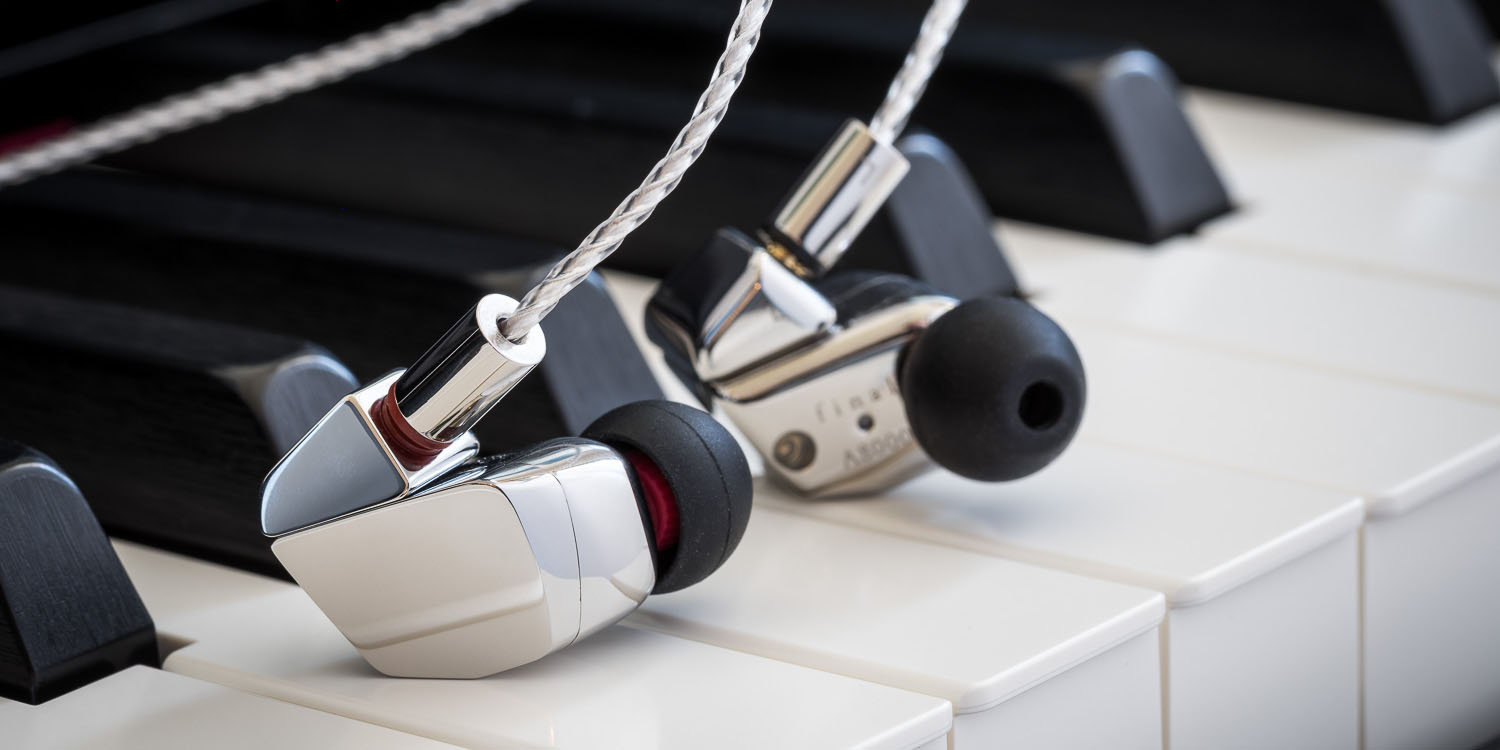
The final A8000 are high-end reference earphones that use a single true beryllium driver in a complex acoustic chamber. As the Japanese company’s flagship, they promise to impress with impeccable clarity, speed and soundstage. Having succeeded in that, I award them my special flavor of the month showcase.
Quick Navigation
The final Brand
Some call them Final Audio and others refer to them as Final Audio Design (FAD). Nowadays, I believe the Japanese brand from S’NEXT wants to simply be recognized as final (with a lowercase f). The company has a long and traditional history in high-fidelity and high-end audio. Though they are well-known for very expensive headphones and some pricey IEM designs, they have gained huge popularity by approaching a broader consumer audience with the formidable low-priced E-series. I reviewed the E2000 and the E3000 years ago for Headfonics and I still use them regularly. The final E4000 are even my daily companion that I always carry in my pocket. But this review is not about the entry level IEMs, but about the very top-end. Another excellent contender in its own right, which promises to lift final to an easy recommendation across all categories and price ranges.
final also deserves high recognition for fullsize headphones. I had the honor to review the Sonorous III before. That is when my interest in final got triggered and I noticed that this is a brand worth watching. Their D8000 flagship headphones is regarded as one of the top headphones on the market. They use a planar magnetic diaphragm with a unique air film damping system to increase the extension of the frequency range. But for now I want to draw the attention to their newest flagship IEM.
The A8000
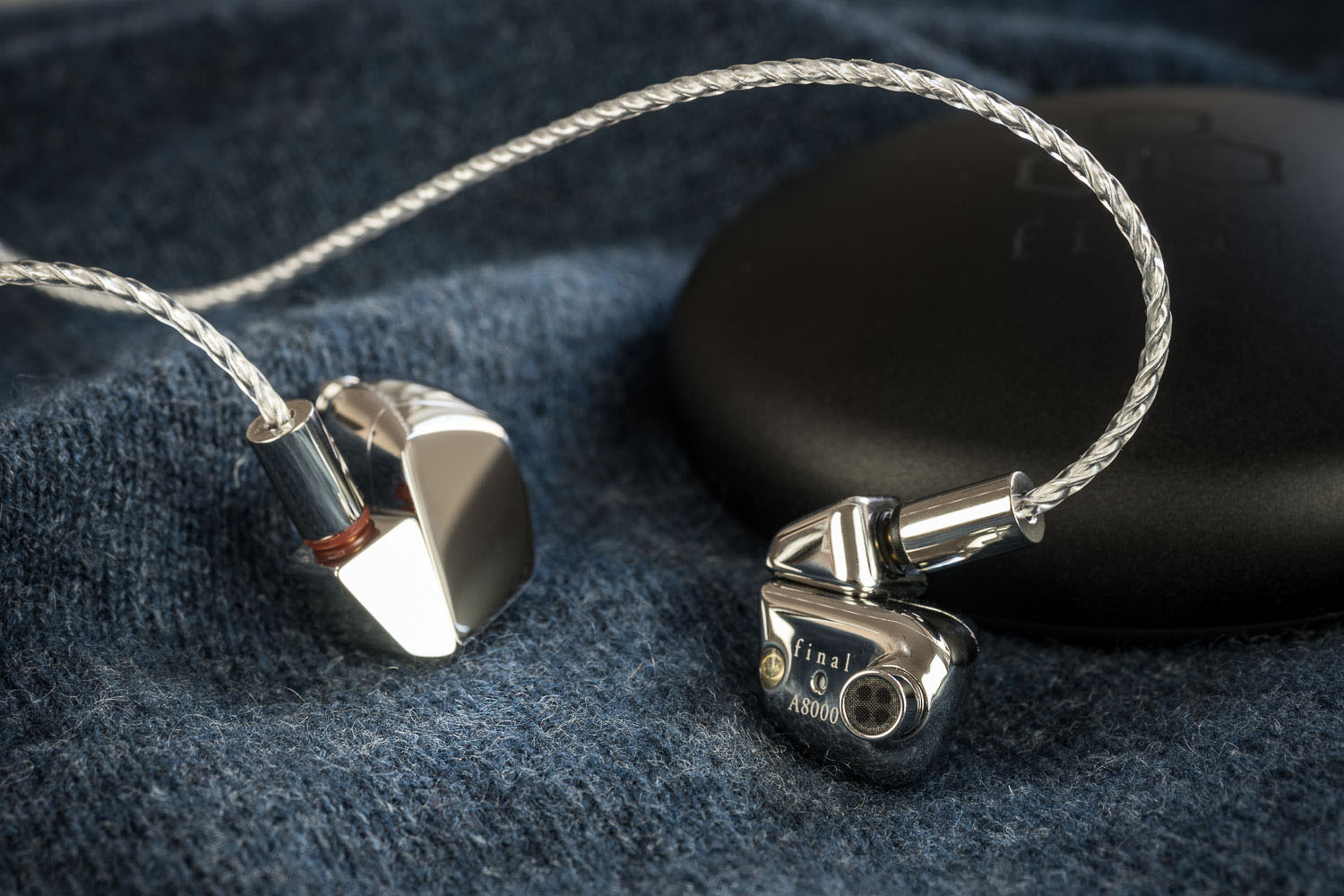
Priced at $1,999 MSRP (excl. tax), the A8000 are a very expensive high-end model. Some custom manufacturers will charge even a bit more (also for handmade universals), but final positions their flagship above the Campfire Solaris, for example. This is a niche market, but one that can create great fame and respect nonetheless. We should be grateful that this market exists and continues to grow, although our hobby is becoming more and more expensive. Without the research necessary to create such amazing products, we won’t be able to apply the knowledge into more widely distributed and cheaper products.
More Information: official product page of the final A8000.
Technical Framework
final created a pure beryllium diaphragm for the A8000. Up to now, apart from the Dunu Luna (which I am also currently reviewing), there were merely beryllium-coated drivers available, which confusingly are likewise promoted as using a beryllium driver (e.g. IMR Acoustics, FiiO, Shozy or Master & Dynamic to name a few). The material is stiff and light, allowing the diaphragm to move quickly and cause low distortion. It thus has physical advantages over any previously used material in dynamic drivers.
As the company’s flagship, there is a lot more research put into the A8000 apart from the development of the driver, like the complex tetra chamber construction. final is already widely known among the audiophile scene, so the pressure to create an in-ear earphone that boosts previous efforts is quite the challenge that needs a lot of dedication.
For more information on the engineering background, I recommend to read notaris’ notes: „Review: Final Audio A8000“ via Head-Fi.org
Build
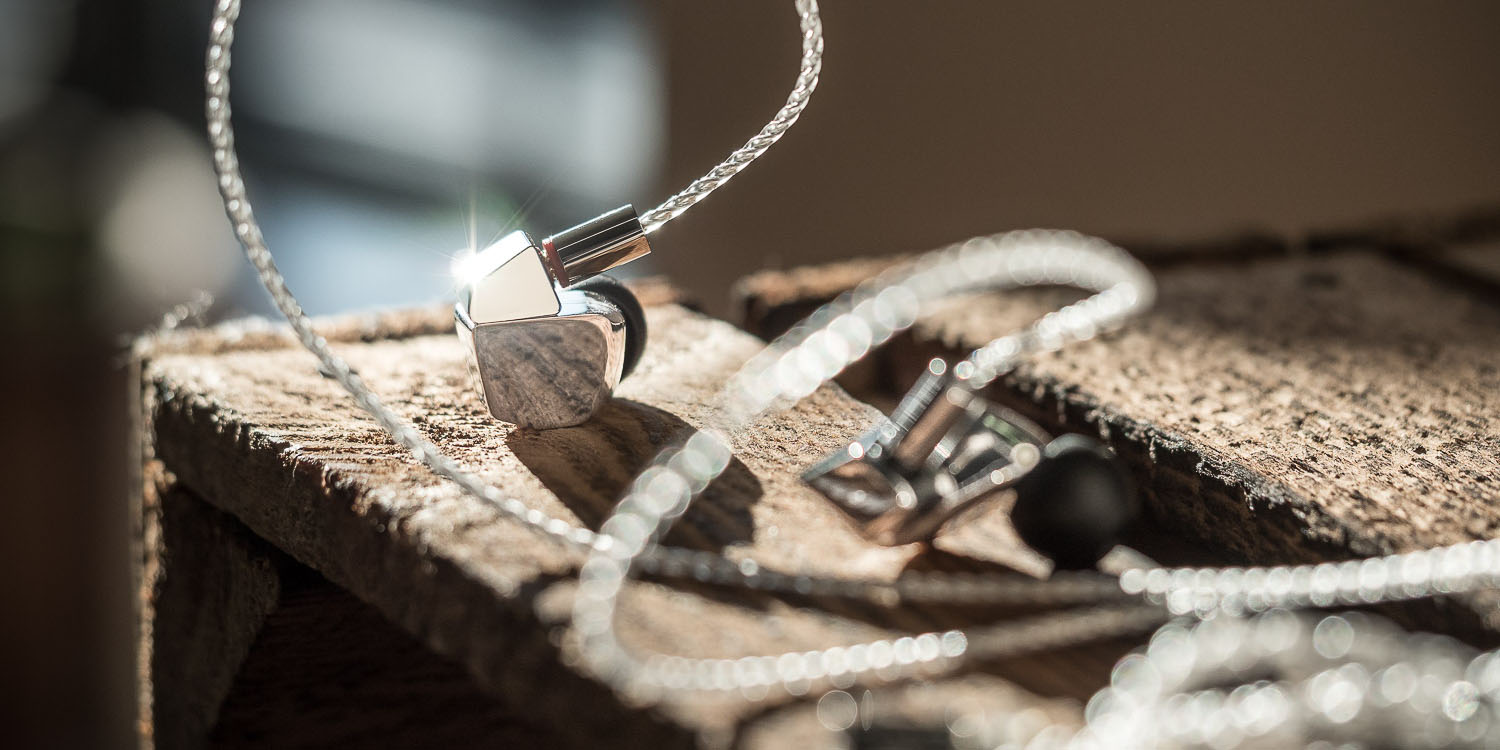
final really seems to like steel housings. The E2000 use an aluminum body at $45 (excl. tax). All cheaper priced models use plastic but everything above also uses metal housing. Looking at the beautiful bronze final B1, I was wondering how final could top that. I am surprised that the A8000 do not use actual silver (like the Vision Ears Erlkönig). However, the mirrored polished stainless steel looks just as fabulous.
Obviously, the flashy material of the A8000 picks up micro scratches and scuffs extremely easily. So one is well-advised to take great care of the IEM and treat them with the respect they deserve. I wish final would have added some small pouches like Campfire does for the Vega and Atlas.
Enclosure
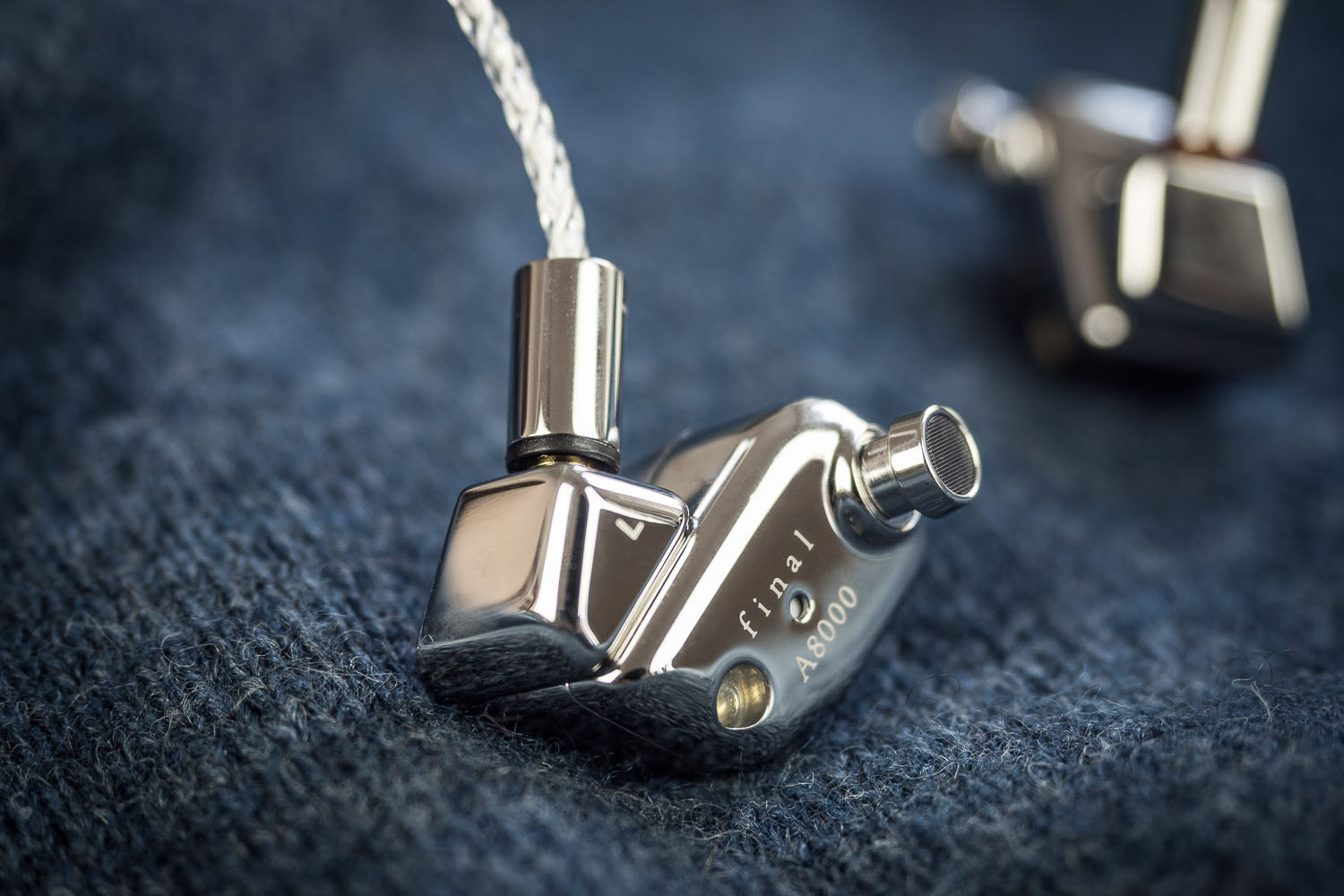
The A8000 are not fully sealed. There is a bass port on the inner side of the housing. Covering it up will increase the bass quantity significantly – but also limit the driver in its movement, so I suggest to keep it clean and not let it get clogged up with dirt. There is a second hole on the bottom. As far as I can tell, it has no major influence on the sound quality but could be there to avoid ear fatigue and driver flex. I have found this with several final earphones and even the B2, which uses a single BA driver. If this is the case, I applaud final for thinking of small details like this, because I really miss such a bore with the Campfire Solaris or InEar ProPhile 8.
Cable
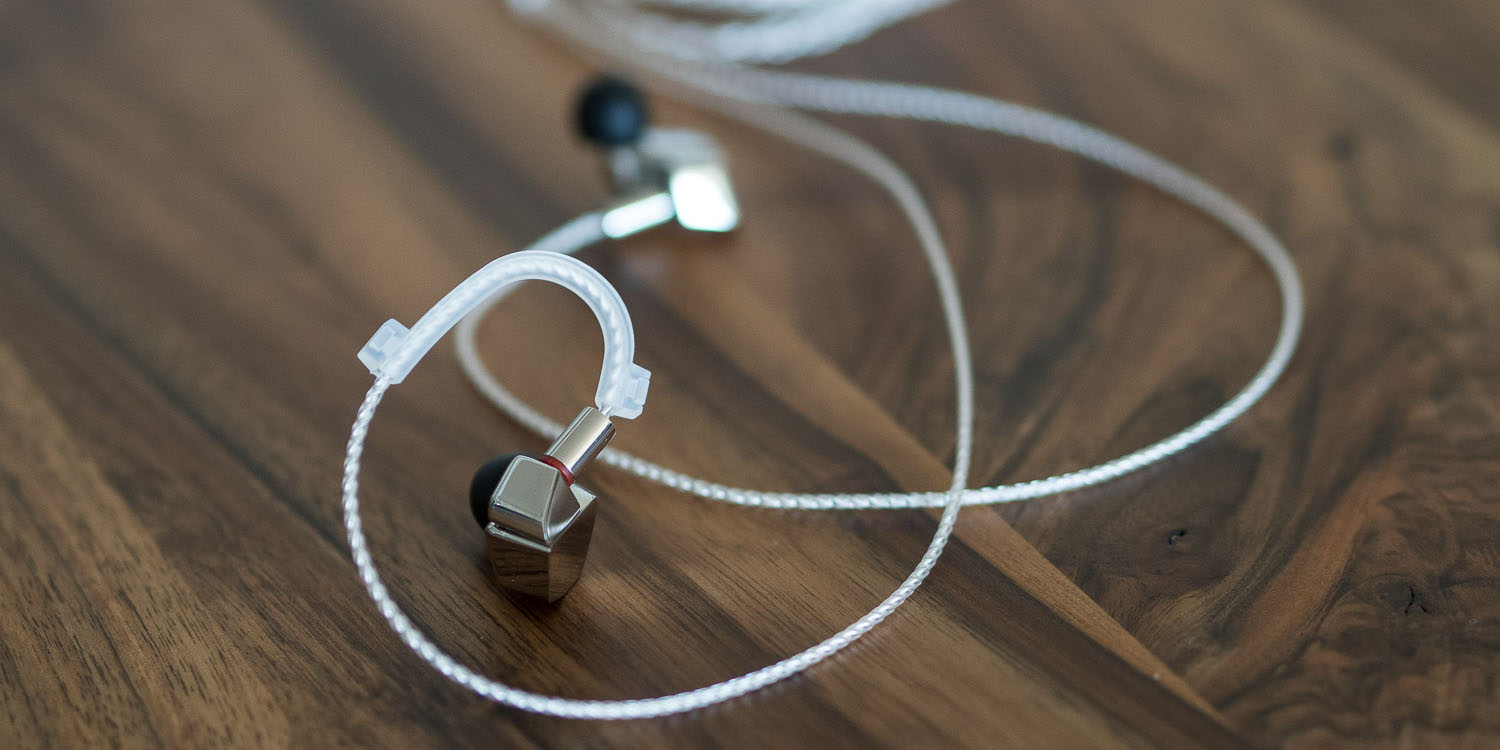
The A8000 come equipped with the final C106 silver-plated cable. It has been tested for a while and comes also shipped with the final E5000, B3, B1 and MAKE1. This cable is relatively durable and flexible for the SPOFC category, though one should not use it for doing sports or such. Using the balance slider on the RME ADI-2 DAC, I can confirm that the cable has zero audible crosstalk. For today’s flagship standards the cable is quite thin, though, especially above the y-split. final includes ear hooks that increase the comfort when wearing the cable over the ear. This time, the ear hooks can be locked but you can just as well use the more minimal hooks from the E5000. The cable is also sold separately with balanced 2.5mm or 5-pin 4.4mm termination.
Comfort
You probably have guessed it from the pictures already and you are right. The geometrical design of the A8000 has some sharp edges that almost feel like you could cut softer materials with them. I think final is trying to boast their experience as an IEM manufacturer and create the most comfortable uncomfortable-looking design. Ideally, none of the edges touch the outer ear. I needed some fiddling around and cable swapping until I found the best angle for me. Now it’s okay. But at the beginning, I did experience mild pain. BTW, the MAKE and B series look similar, but they use a different shell design.
Ear Tips
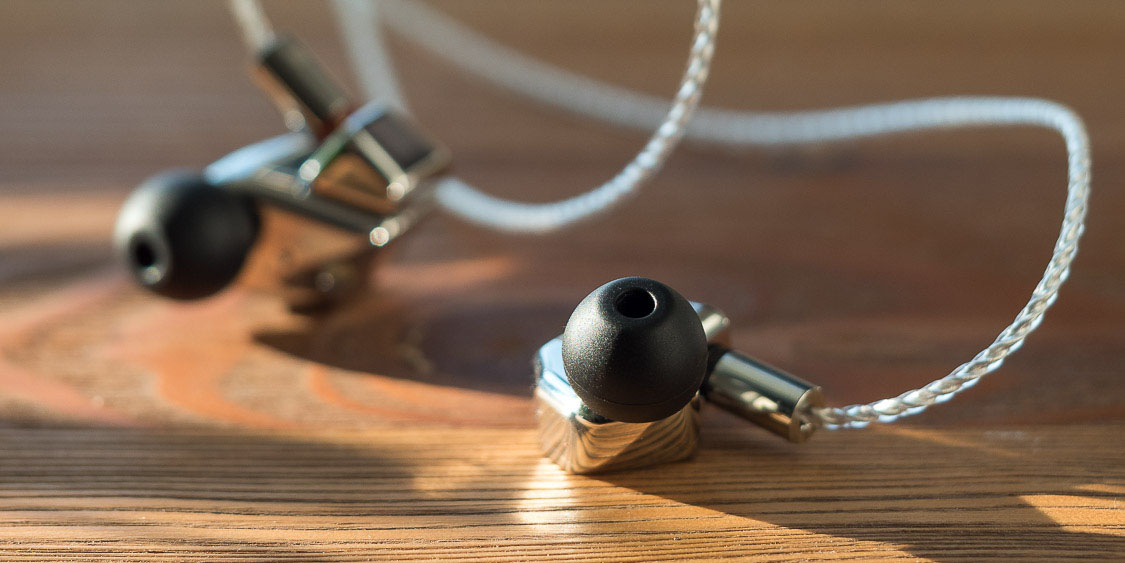
Luckily final created the best ear tips on the market. The E-Type silicone tips are my preferred choice for comfort. Their nozzle is smaller than the average tip, so they change they sound for most IEM. But with the final A8000 I am sure they were tuned and matched accordingly so I am happy to use these during the entire review process. I am satisfied to count 5 sizes (SS, SM, M, ML, L) which should include the perfect pair for most ears. Most IEMs include foam tips at this price. But if you have the final E-Type tips, you don’t really need foamies unless you want to experiment with the sound.
Compatibility
As a high-end product, I expect most users have a dedicated audio source to pair the A8000 with. I don’t want to go into synergy too much. Due to the versatility, I personally mostly use the RME ADI-2 DAC for reviews. The Chord Mojo sounds great too, though. As expected, the Hugo 2 is an even greater match. However, the A8000 are not very picky in regards to source. I enjoy using them with the Ikko Zerda iPhone dongle too. The A8000 don’t reveal hiss easily, they do not demand an extraordinarily powerful amp and they also do not react to increased output impedance.
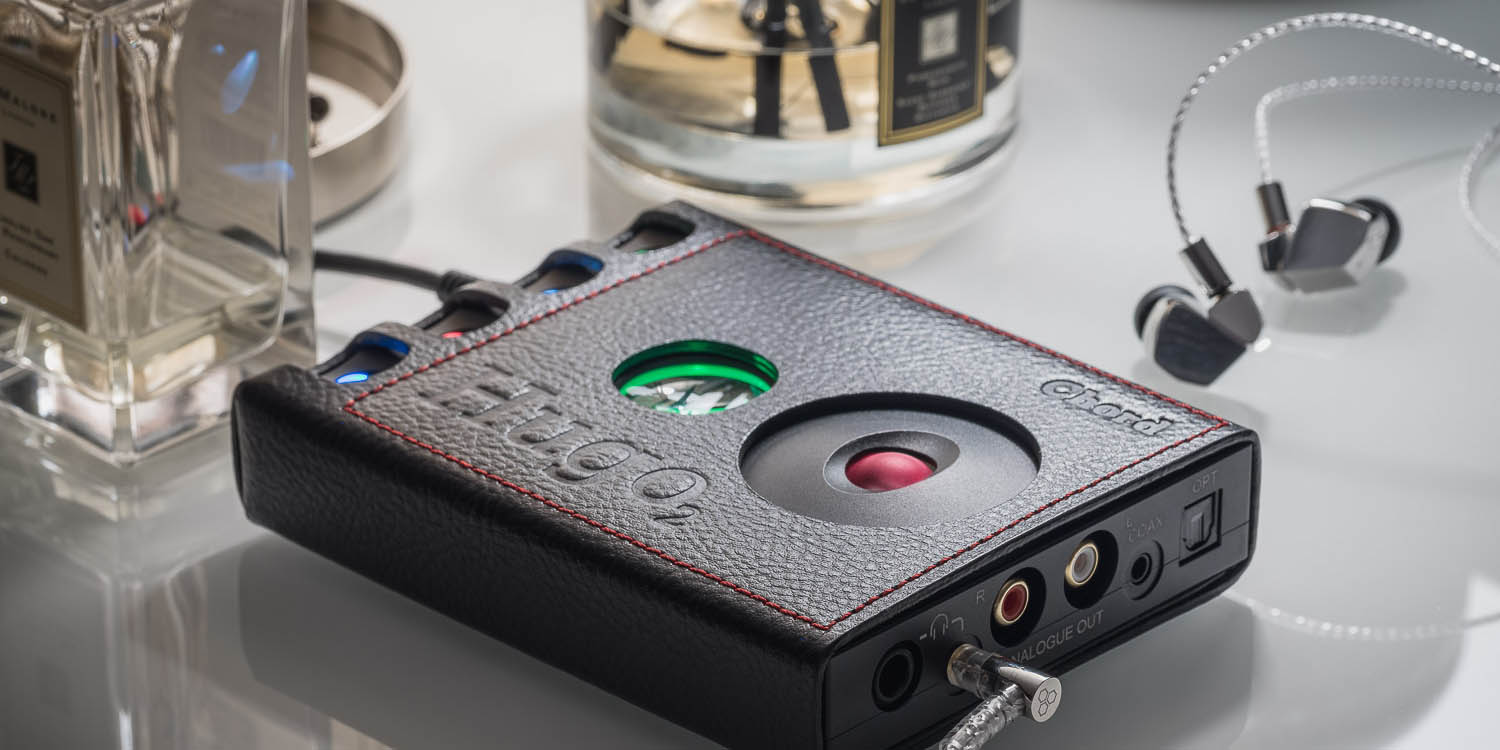
Sensitivity
The A8000 are rated at 102 dB (presumably 1 kHz @ 1 mW). This is quite a bit lower than many in-ear monitors that reach higher pressure levels from the same output. However, they’re not difficult to drive either. final is not known to build extremely sensitive IEM. For example, the E5000 are quite a bit less efficient. You might reach the top levels on a smartphone, but then again, the A8000 are not the IEM you want to avoid a high quality source with so headroom shouldn’t be an issue.
Hiss Performance
The sensitivity rating helps to reduce audible hiss from the amp. So as long as the source can provide enough power and was designed to be compatible with IEM, there should not be a lot to worry about. However, the A8000 can generally be very revealing about noise. Especially if it’s on the recording.
Linearity
The final A8000 seem to have a very linear impedance. That is very fortunate so the output impedance of the amp cannot bend the tonality of the IEM. That does not mean that the amp does not provide its own signature, but that pairing should not result in unexpected results.
Sound Tuning
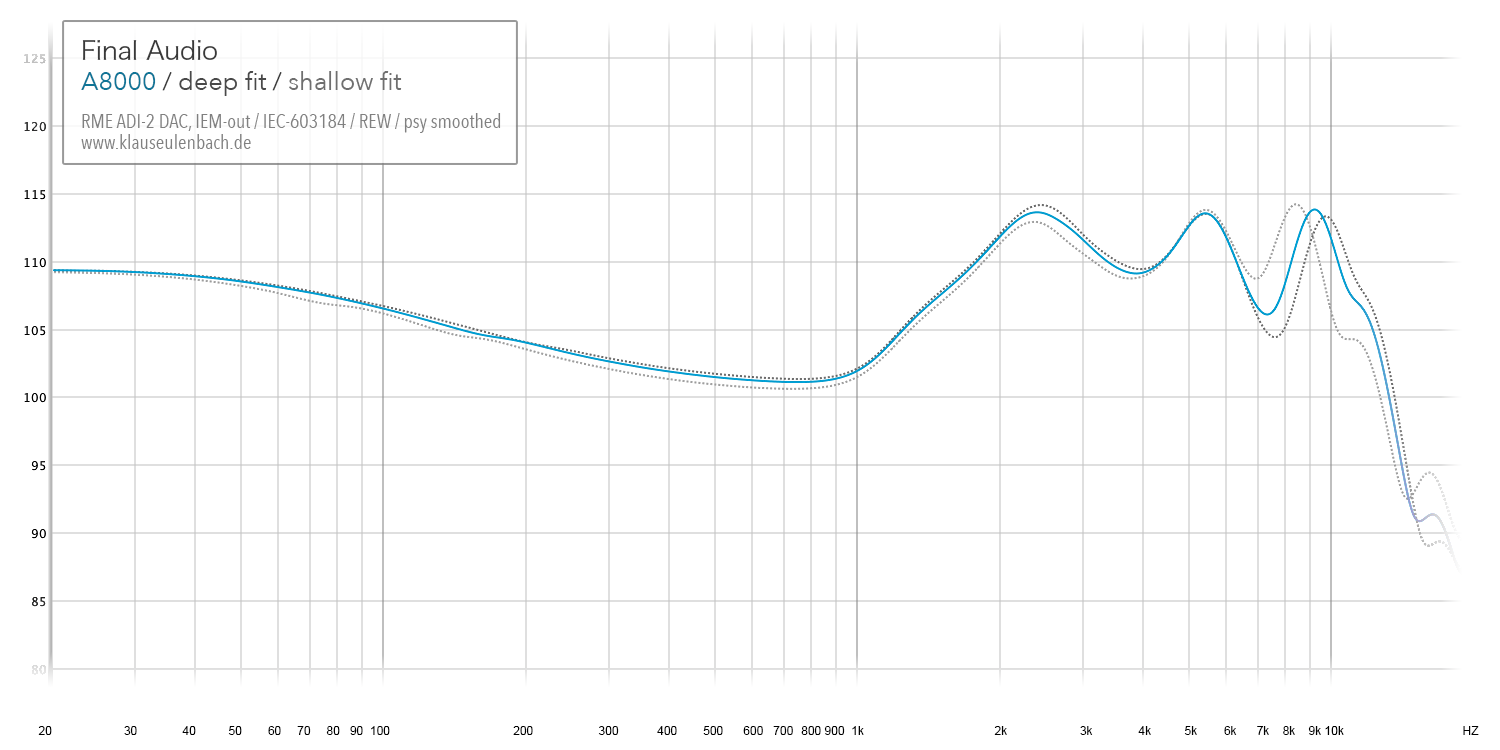
The final A8000 sound very clear and complete. They have a bass boost in the sub-bass and counter the low-end weight with amazing treble clarity. The midrange does showcase a slightly bright tilt but fortunately evades any sharpness. The extension in the lows and highs is breathtaking. The tuning works really well at high listening volume which spans one of the most immersive soundstages yet.
This is a great departure of the other IEMs I have tested from final. All earphones from the E and B series, as the ones from the F series, have a much bigger body and a full-sounding bass. The flagship A8000 sound very different with a brighter presentation.
Check out the AZLA Horizon which I have reviewed and awarded with a FOTM previously. They have a very similar tuning.
Harman Target
Actually, the sound tuning of the A8000 is a close interpretation of the Harman IE 2017/18 curve. If you agree with this target, you are in luck because the A8000 hit the curve within 5 dB across the whole frequency range. The bass quantity is on point but the A8000 have a little bit more warmth and thickness compared to the very lean Harman response curve. A8000’s tones are more natural, in my humble opinion, because the low-end is not as cut-off and tacked on.
However, in the upper mids final draws even more presence than Harman which can sometimes create a cautiously tinny timbre. It’s nothing my mind has problems adjusting to, but I am sure some people wouldn’t mind a bit more meat and lushness with intimate voices. One weakness is another strength as this creates great pop to female vocals and works great with harmonics of acoustic instruments.
Finally, the A8000 have amazing treble extension that far exceeds the Harman target. If you like air and open sounding high frequencies, these are the earphones for you.
Sonic Qualities
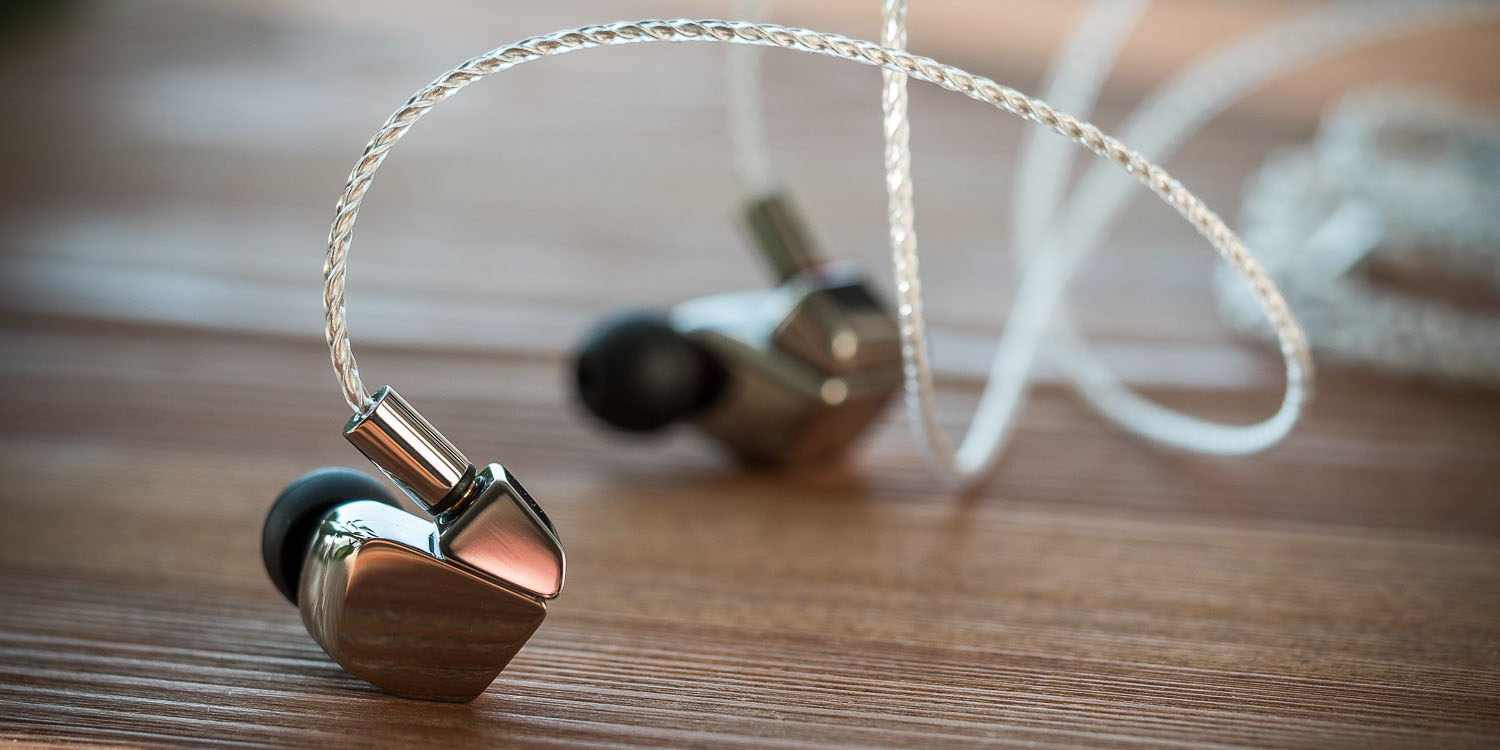
While sound tuning is the most important aspect for many audiophiles, it never tells the whole story. Especially at higher volumes, the tuning becomes less relevant.
Bass
As addressed in the tuning section, the final A8000 are not shy in the sub-bass. They hit a confident pressure in-line with the Harman target which can come off as exaggerated in terms of studio or monitoring neutrality. However, the bass speed and decay are unlike any I’ve heard from a dynamic driver before. The quickness avoids adding rumble on its own and proves to be among the best quality bass I’ve experienced since the 64 Audio tia Trió and Fourté. I rarely listen to Electronic music, but from now on, when I do, I will be sure to pick the A8000 first.
Boom, punch and warmth drop linearly and have a perfect transition into the midrange. Actually, the bass curve is matched with the equal loudness contour by Fletcher and Munson. So even at lower volumes you don’t feel like you’re missing any information or extension in the lows. When presented separately, the punch on the bass can hit hard. As can the texture impress especially with acoustic strings. Often the bass emphasis is stolen by the upper midrange and treble presence. So the impeccable bass performance is actually happening in the background for the most of the time. final opted for quality over quantity, which is almost a shame because I doubt every user will actually appreciate the flawless performance and recognize the bass performance as one of the best yet, which it definitely is.
Midrange
Partly due to the tuning and mostly thanks to the low distortion, the midrange is as transparent as can be. I really hate to use clichés like that, but no matter how much high-end gear I own and get my hands on, there is still one tiny little recording flaw I haven’t noticed prior to the A8000. I remember how impressed I was when the InEar ProPhile 8 was one of the first IEMs to make me realize doubled voices in many recordings where I had never noticed them before. This quality isn’t even stressing the A8000, which just shake multiple layers apart.
Despite a slightly bright tilt or emphasis on harmonics, the mid tones are among the cleanest I have heard. Have you noticed that sometimes single notes of a piano recording sound like they have an unnatural ring to them? It’s subtle but noticeable as unexpected parallel notes being played that make the actual fundamental sound excessively textured. That is most likely distortion and something I had simply accepted in the past. It’s especially apparent in the midrange to my ears. However, the final A8000 clear this up wherever it’s possible; e.g. not due to distortion on the recording.
I don’t want to over-emphasize on a single aspect, but we are talking high-end audio and every advancement deserves praise. The A8000 are class-leading in this regard and should be a dream come true to any fan of Classical music. I recommend to check out the distortion measurements by csglinux via Head-Fi for a more detailed take on this matter.
However, do not expect a full and lush midrange from the A8000. They achieve some level of intimacy through microdetails, like breathing near a microphone or very articulate mouth noises. But you probably won’t get the Jazz bar environment feeling from this pair of IEMs unless the producer mixed the album accordingly. There is a very simple mod to decrease the edge in the midrange. One can add another (or even a third) layer of the dust filters in front of the nozzle. This reduces the output around 3 kHz which might be of preference to some users. I am sure many will be fine with the stock tuning too.
Treble
The final A8000 experience is similar to splashing cold fountain water into your face after a long and enduring walk under the sun. It’s a refreshing sensation that is alike breathing clean air after living in a polluted urban city for years. It’s no coincidence that the presence of super high frequencies (15+ kHz) is described as air in audio terminology. Their presence helps to make even perfectly sealed in-ears sound open and wide. This is the best I can describe the A8000 – open sounding. When using ear tips with less grip than the default E-type, I have to double-check if I got a good seal because the superb treble extension is not something I am accustomed to from IEMs.
Unsurprisingly, the definition of A8000’s treble is yet again pushing boundaries. Cymbal splashes are amazingly crisp and articulate. There is no hint of smear or clouding in the least. In fact, switching to other similarly priced IEMs can sometimes be embarrassing as they usually do not showcase such revealing resolution. Some of it can be ascribed to the tuning, but comparing with the similar AZLA Horizon just reveals how much better speed and shorter decay the A8000 have.
However, the sheer quantity of the treble can sometimes approach sibilance and pierce. Fortunately, the balanced elevation closely dodges both. I can imagine final spent a lot of time pushing and refining the treble to get it just right without crossing the line. But even without single sharp notes, the tuning can cause fatigue after extended listening periods. But that doesn’t matter at all, in my opinion. The A8000 are a high-end product that create an amazing experience – they’re not supposed to be a daily driver or the first choice to carry around wherever you go. If you want to make every listening session count, you should really consider the final A8000 for the truly special moments.
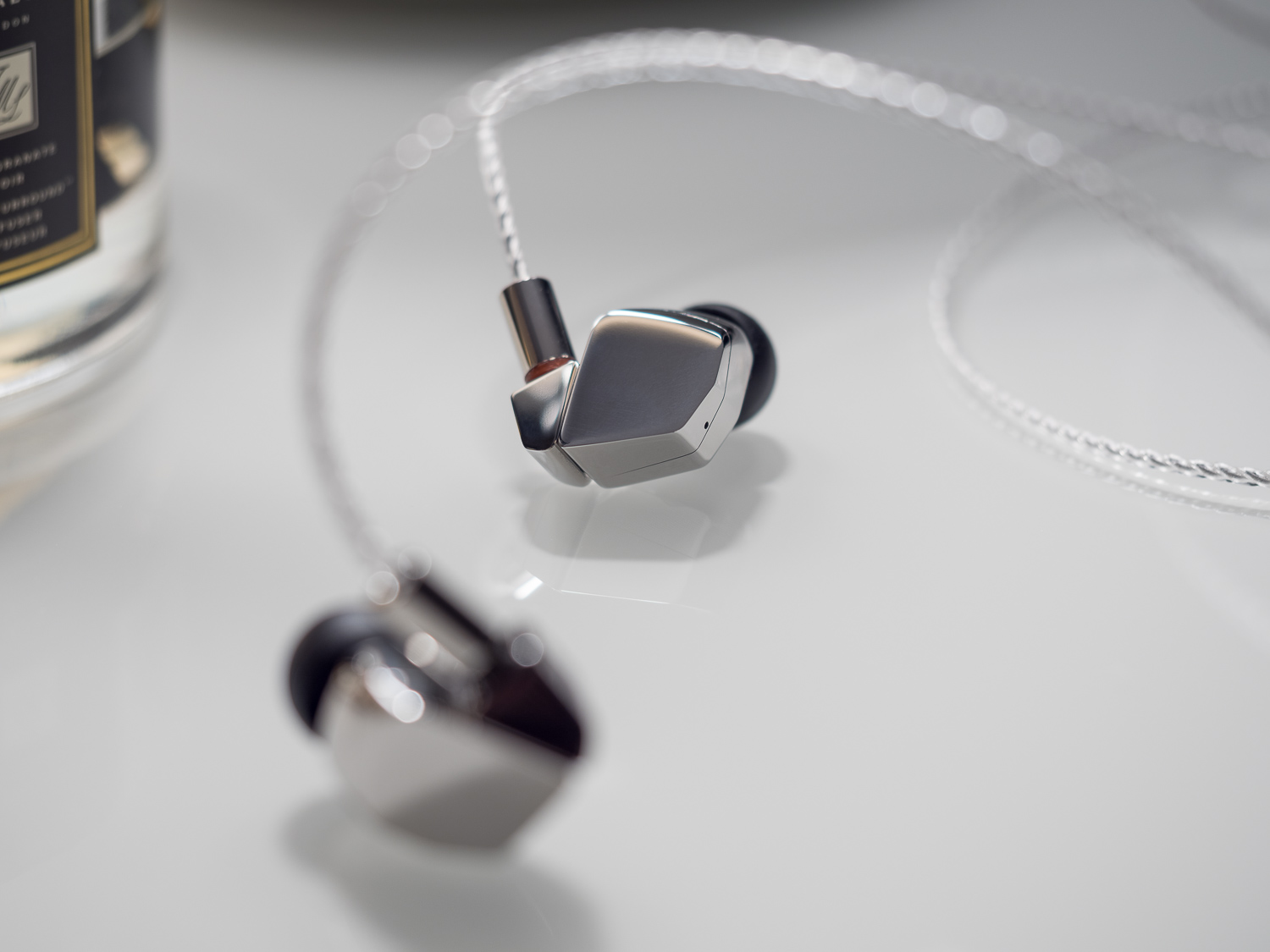
Resolution
The waterfall plot (CSD) shows the fastest decay I have yet measured. Combined with the lowest distortion, the A8000 unsurprisingly boast some of the best resolution the headphone scene has yet experienced. The tuning doesn’t really allow the bass texture to really come through when much is going on, but the quality is very apparent when listening to solo strings or less complex acoustic pieces. final’s single dynamic beryllium driver actually comes close to the two tia drivers from the 64 Audio tia Fourté in the treble and surpasses the speed of the Fourté’s bass. Based on my perception of resolution (texture, separation, layering and definition), the final A8000 ties for 2nd and 3rd place next to the custom A18t. They beat the Dunu Luna, InEar ProPhile 8, 64 Audio U12t, qdc Gemini and everything else I have reviewed before.
Soundstage
Considering the amazing extension on both ends of the frequency response, as well as the great amount of air and clear-cut layering, it should come as no surprise that the A8000 are once again on top of the leaderboards. The stereo information surrounds the listener in a big concave half-circle with great positioning of the various instruments. It’s truly one of the most immersive soundstages yet. My measurements show a fairly linear phase response, too, which could also be a reason.
I do find the separation of the left and right channel to be extremely prominent. Almost as if the „phantom midrange“ was missing. In fact, one of the first notes I wrote down during my first minutes with the A8000 was that I could not find the center. As if everything was either pushed to the left or right side. I am not sure if my mind adjusted or if I improved the fit, however, now the soundstage sounds very homogenous to me. Using a crossfeed is probably not a bad idea, though.
Music Pairing
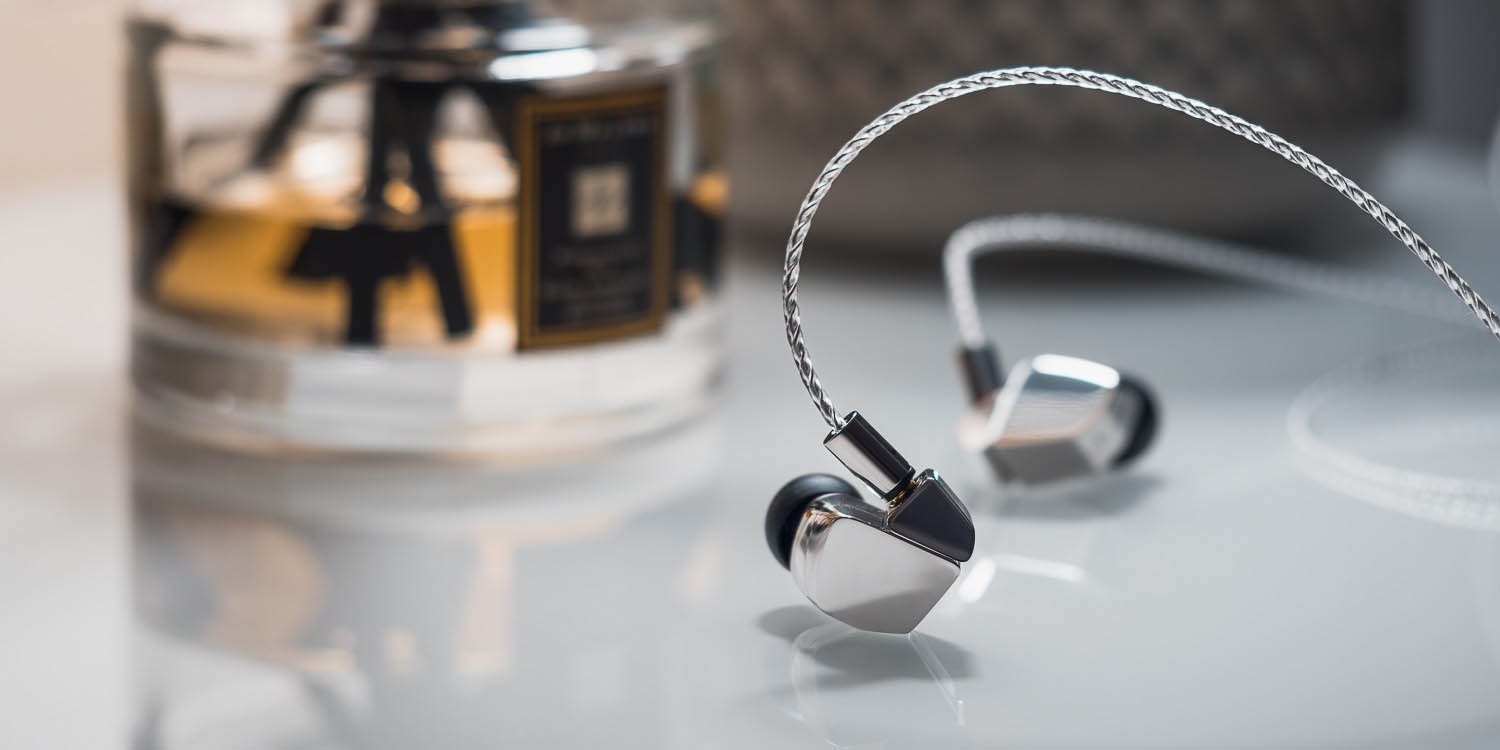
Classical
For my preference, the final A8000 easily beat my previous pick, the 64 Audio A18t, for Classical music. It doesn’t matter if I play complex orchestral pieces, choir or chamber music. The natural tone of the high resolution recordings is perfectly reproduced and presented in a huge soundstage. The dynamic essence of quiet and loud parts are expertly portrayed. I honestly cannot think of a more suitable IEM for Classical music at this very point in time.
Jazz
The A8000 perform equally well with most Jazz albums. I especially enjoy the Japanese Jazz pianists Chihiro Yamanaki and Hiromi which again happen to be a perfect match for the final A8000. For more muted Jazz albums, like they are often published by ECM Recordings, I personally enjoy these playing in the background for many hours per day. The A8000 draw too much attention for my use and also the limited comfort is not really suitable for prolonged listening sessions, IMO.
Electro
Playing my electro playlist, I got floored by the slam of A8000’s dynamic driver. I seriously did not expect this quantity of rumble and oomph as the bass usually lurks in the background. Paired with bassy tracks, the presentation shifts into a completely different realm – absolutely jaw-dropping! These IEM got me back into EDM.
Rap/Hip-Hop
Rap and Hip-Hop are not quite such a good match. I am used to a bit more authority and fullness from the voice of an intimidating gangster that throws punchlines. The bass tracks are often of lesser quality than with electronic music too, so the A8000 can’t really flex their muscles in this regard. Instead, background snaps and samples shift to the front which can be a bit distracting.
Vocal
For Vocal, there is a strong preference from my side to play female artists over male vocals because of how the A8000 make higher pitched voices pop, whereas men tend to sound a bit hollow. Katie Melua and Michael Jackson are a great match, though.
Rock
Finally, for Rock and Metal the compression can make or break the experience. Especially cymbals are often compressed so much that a lot of the natural transient and decay information is lost. This really does not bode well for the final A8000 who puts the treble to the front. Of course there are positive exceptions, but they are few and far between based on my music library. Don’t even try hitting play on something like Spiritual Beggars.
Verdict
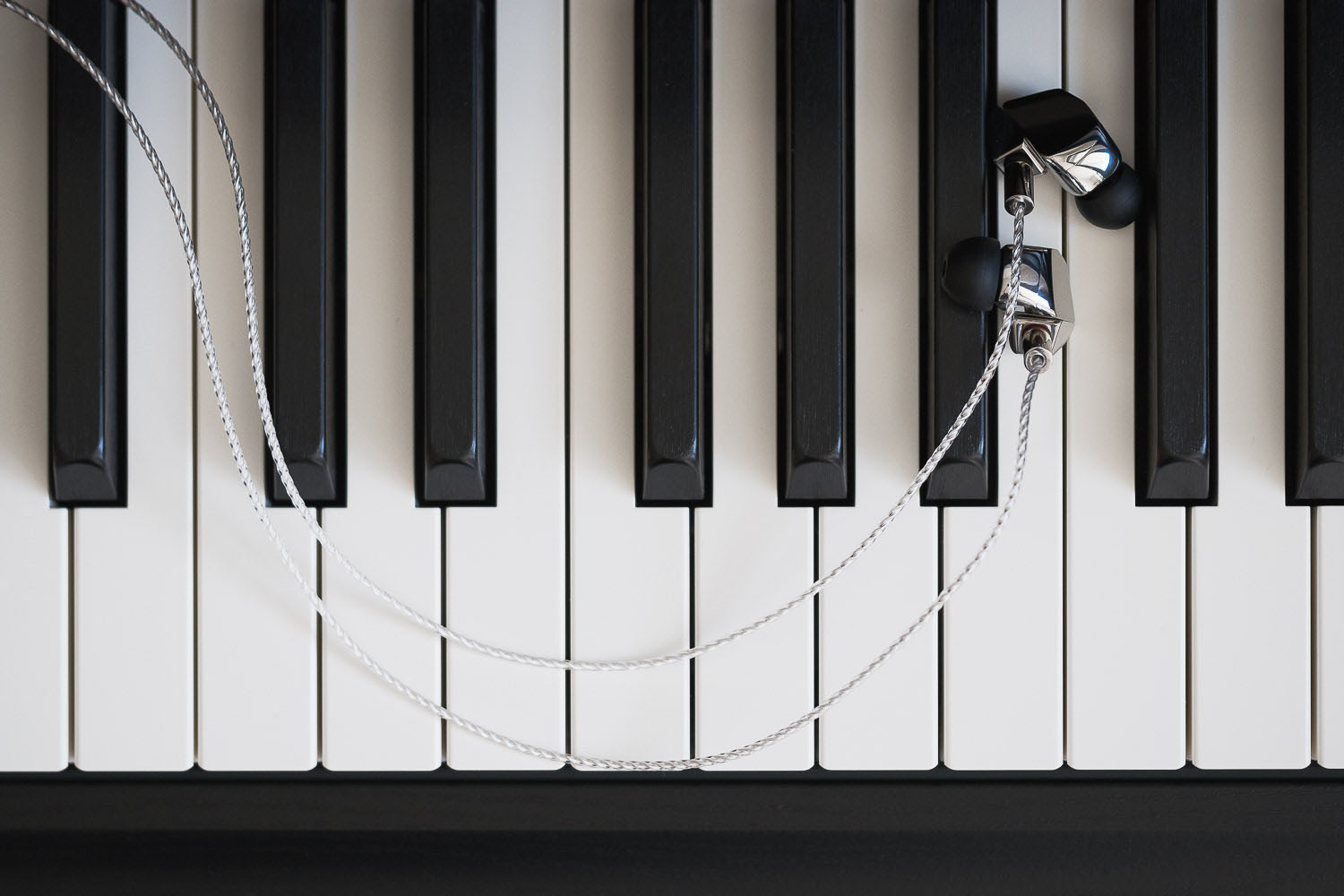
The actual review process is never finished. I plan to gain more experience with further comparisons and subsequent source pairing. But for now, the final A8000 are clearly some of the technically most amazing IEMs I had yet the fortune of testing. The experience with the A8000 is nothing but sensational, which is also due to the dynamic tuning. Many will appreciate the energetic presentation that can put itself before the music sometimes, although high quality recordings are rewarded with immersive details. The treble is the star of the show, so best avoid audio with clipping, strong compression, noise or recording errors to forego annoyances.
The A8000 look gorgeous, too. I’ll admit that there are more ergonomic earphones available, but the polished steel and heavy weight make these feel luxurious and force the user to take great care of them. The design sets the mood for the special listening sessions and the mirrored finish nicely matches the sound signature too.
Ultimately, the final A8000 are a pair of unique high-end reference IEM that arguably have the best sonic performance in its price range.
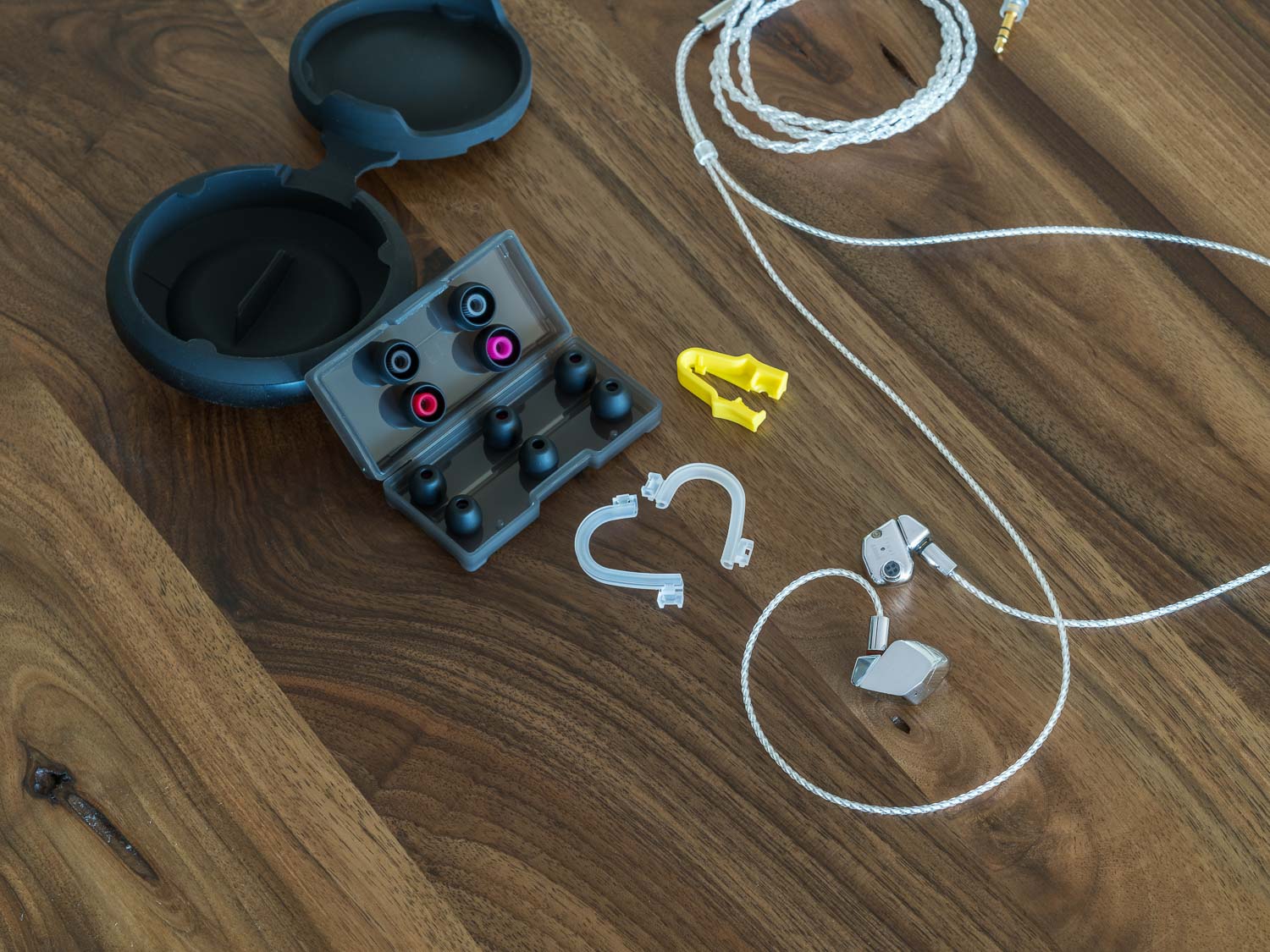
As always, feel free to follow me on Instagram for more pictures.
@16bitaudiophile
